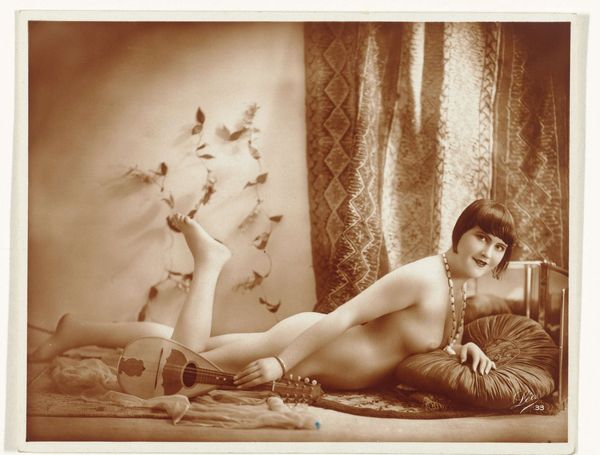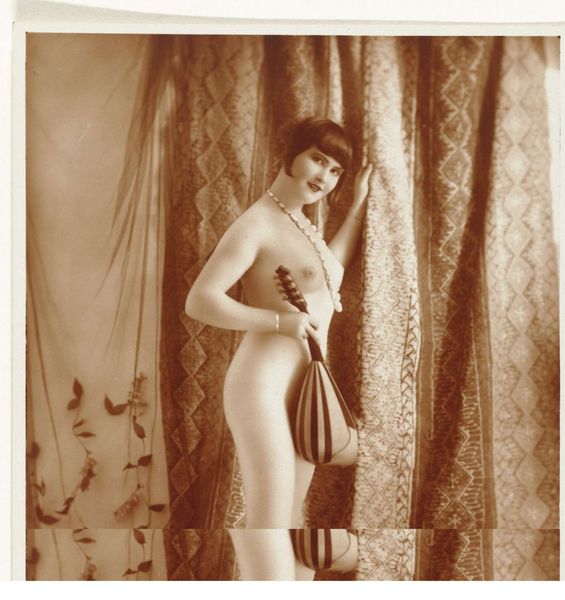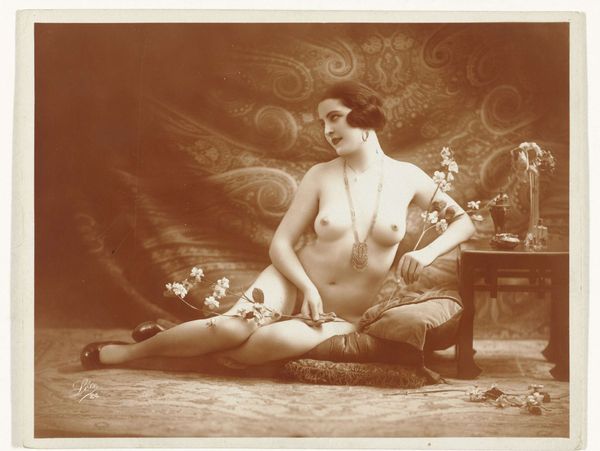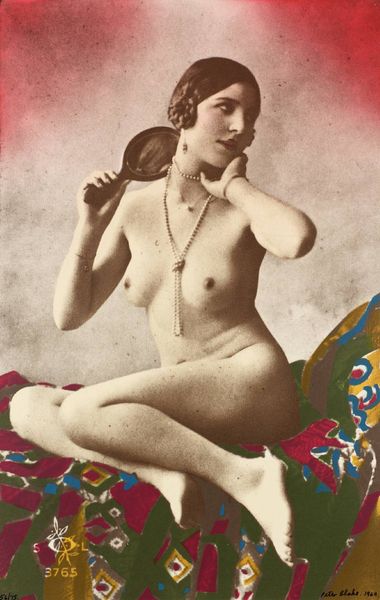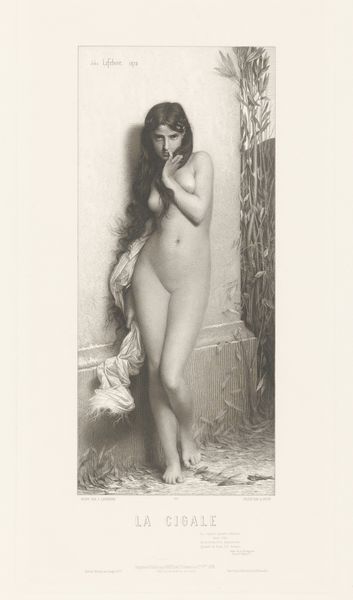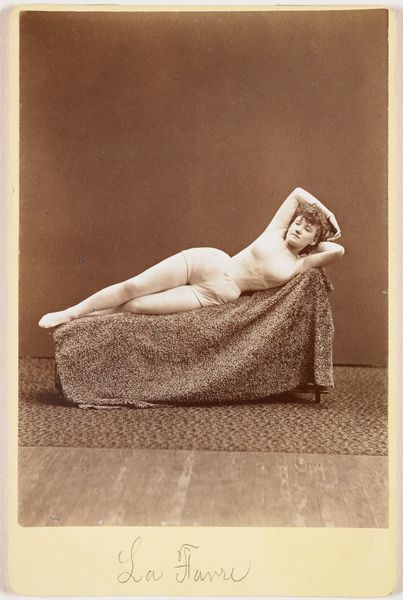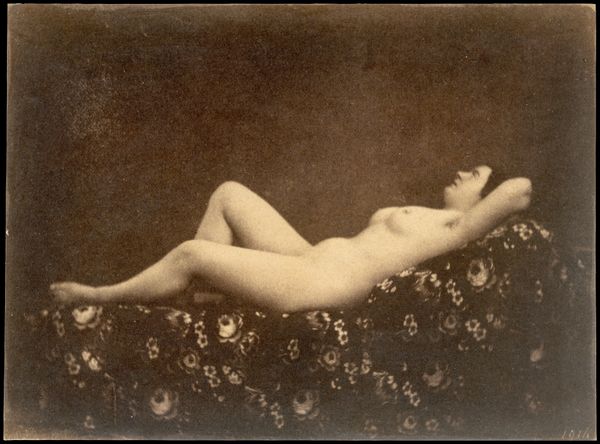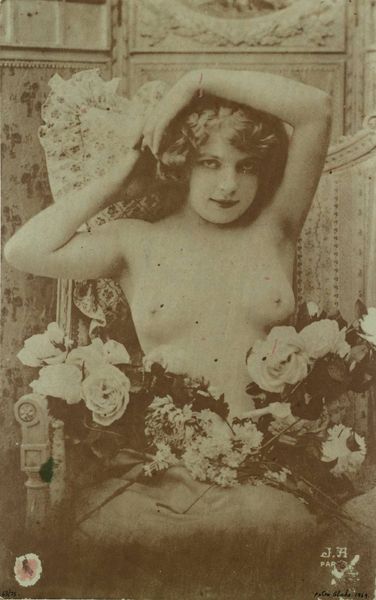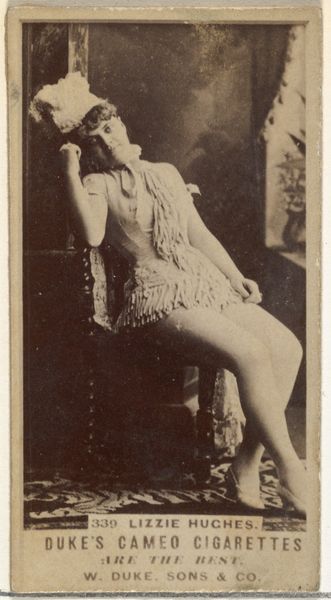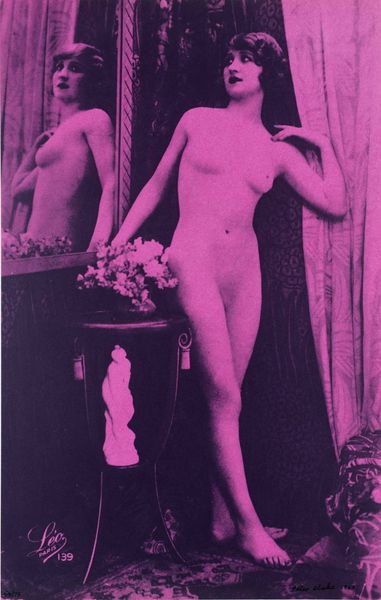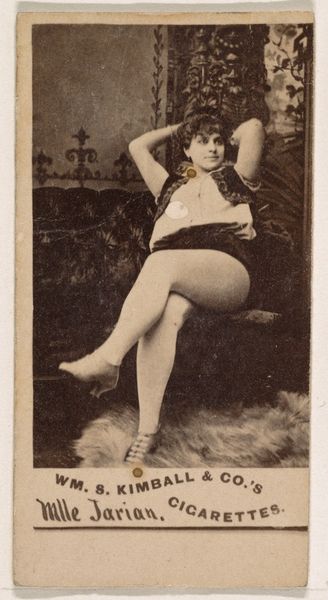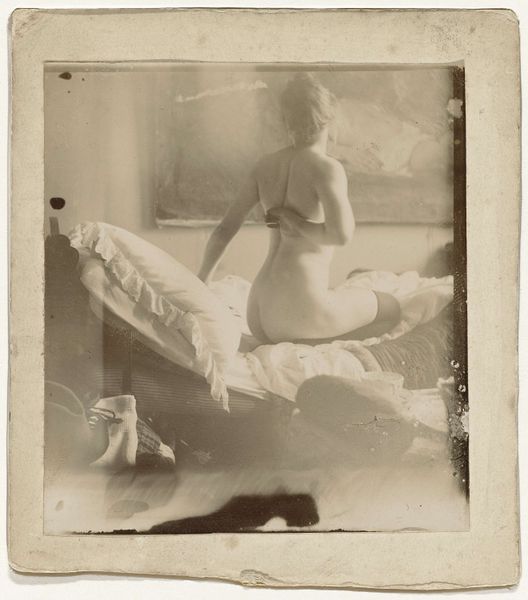
photography
#
portrait
#
art-nouveau
#
figuration
#
photography
#
figurative photography
#
symbolism
#
nude
#
erotic-art
Dimensions: height 226 mm, width 177 mm
Copyright: Rijks Museum: Open Domain
Curator: Let's take a moment to consider this photographic print, entitled "Vrouwelijk naakt op stoel met bloem in haar hand," placing it somewhere between 1900 and 1920. Editor: There's an ethereal quality to it, a subdued sensuality. The floral backdrop behind the seated nude gives off both concealment and lush exposure. Curator: Exactly. Consider the historical context: the early 20th century, witnessing changing societal norms around the female body, how photographic technology shapes this shifting discourse and its representation within artistic communities, particularly regarding themes like figuration, eroticism, and portraiture through photographic practices. Editor: I see the bloom in her hand as loaded—a fragile emblem of budding womanhood, echoed in the backdrop, contrasting with her direct gaze, confronting yet still framed in such decorous taste; as if she is being given the flower rather than choosing it. It's less a sign of erotic freedom and more one of self awareness under the viewer's evaluation. Curator: Her hand, lightly clutching it, makes me wonder about the production conditions. How deliberate was the pose, how involved the sitter. Was it made in an artist’s studio or someone's commercial space, or a parlor made for such tableaux? The floral backdrop hints at bourgeois interior and commerce—all crucial considerations. Editor: Interesting, because I immediately looked past it as part of art nouveau design. Do you find it limiting? It's difficult not to read something into her quiet demeanor, perhaps resilience, knowing now how socially challenging the artistic choices were back then... though still demure in its statement as it embraces symbolism to be expressive rather than blatant, especially with the bloom's gentle touch. Curator: Such analysis tends to focus on its subject, whereas I wonder about its social setting and impact; this affects any singular definition beyond artistic or portrait conventions. Did early 20th-century portraiture contribute a level of autonomy of the artist toward nude figurative expressions beyond those limited confines? Or, vice versa? Editor: Both threads pull us closer. It really reveals a rich tapestry about those who posed and created such symbolic forms as it represents a quiet narrative in between then and our own present readings. Curator: Indeed. These artistic portraits reveal so much about culture. Editor: Thank you. A meaningful engagement to reflect on representation.
Comments
No comments
Be the first to comment and join the conversation on the ultimate creative platform.

